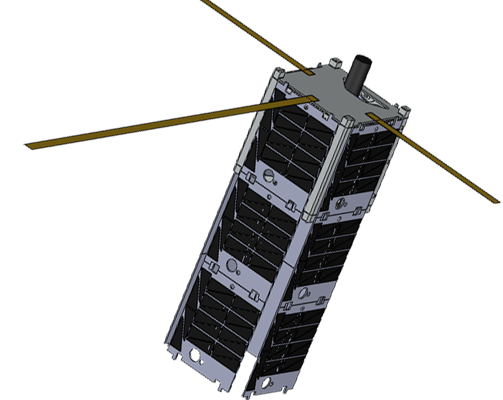LambdaSat

Lambdasat (Λ-sat) is a 1U Cubesat developed and operated by the Lambda Team, an international group including Greek scientists and students from San Jose, USA. The spacecraft will conduct the technical demonstration of the satellite bus in the radiation environment in space and track systems degradation. Additionally, the satellite carries an AIS receiver (Automatic Identification System) and a scientific experiment hat looks at Graphene in space.
The satellite uses a main computer and a main power board that conditions a power bus using solar power generation featuring body-mounted solar cells and deployable panels that create a total surface area of three CubeSat units. Communications are accomplished in a Short Burst Data mode using the Iridium satellite constellation which allows the satellite to downlink data quickly after acquisition. Standard communication sessions with ground stations will be made via a UHF transceiver operating in the amateur frequency bands.
The main payload is an AIS receiver that will track sea vessels around the globe.
The Automatic Identification System is used by sea vessels that send and receive VHF messages containing identification, position, course and speed information to allow the monitoring of vessel movements and collision avoidance as well as alerting in the event of sudden speed changes.
These signals can be transmitted from ship-to-ship and ship-to-shore to allow the monitoring of a local area, but deploying space-based AIS terminals allows a broad coverage and data relay to ground stations for monitoring of large sea areas. However, due to the large footprint of satellites, overlapping and signal collisions become a problem, especially for frequented traffic routes.
Graphene is a two-dimensional structure represented by a single layer of carbon atoms that are arranged in a regular sp²-bonded hexagonal pattern. Graphene was first generated in laboratory conditions in 2004 and has led to the discovery of many new phenomena using this material that could find application in a number of fields due to its excellent electrical, chemical and mechanical properties. Possible applications are in the production of nanostructures (e.g. carbon-nanotubes), electronics (transistors, sensors), biological engineering, energy storage, material science, etc.
Exposing Graphene to microgravity conditions will allow scientists to learn more about its properties and the way it reacts to ionizing radiation in such an environment. Lambdasat is carrying a Graphene transistor (GFET) that will be used to examine the effect of radiation on Graphene bond-crystal structure, effects on electronic performance and mobility, the effect on the substrate and dielectric interface and doping an scattering effects in the presence of radiation.
